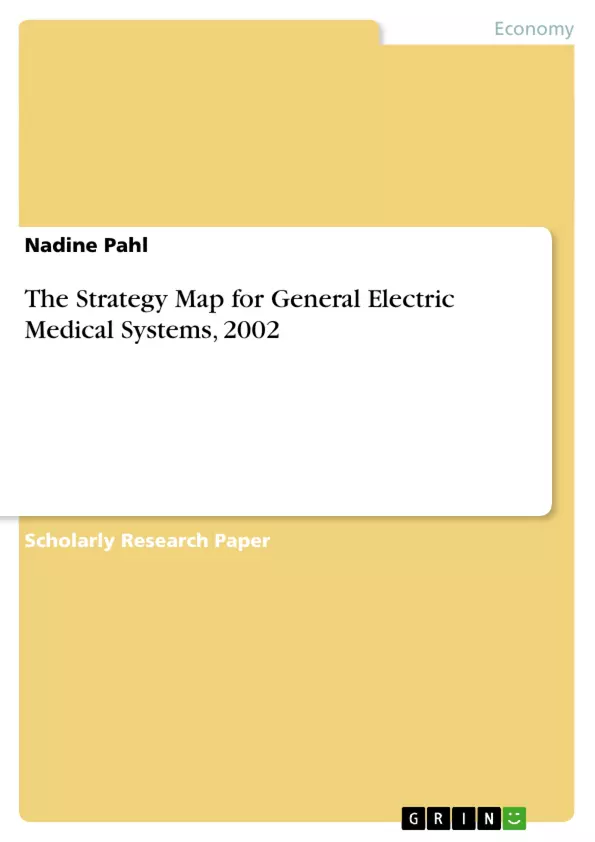If you take the words of a former General Electrics (GE) employee to define strategy, William E. Rothschild said, “What do you want to achieve or avoid? The answers to this question are objectives. How will you go about achieving your desired results? The answer to this you can call strategy.”
This statement not only highlights the need for strategy but also the need to bring strategy to fruition. Companies should not only devise strategy but also successfully clarify and execute their strategies. This means that a company has to be able to measure its strategic success.
Unfortunately, company strategy is not always transparent or understood in the same way by a company’s key players. Sun Tzu, a Chinese military strategist who wrote the military treatise The Art of War, praised this aspect for strategies in war as follows: “All men can see these tactics whereby I conquer, but what none can see is the strategy out of which victory is evolved”.
The Strategy Map created by Kaplan and Norton is to facilitate corporate strategy development and execution providing a missing link between strategy formulation and strategy implementation by identifying the key internal processes that drive strategic success and by aligning investment in people, technology and organizational capital for the greatest impact.
The first part of the assignment describes in detail the theoretical framework of Strategy Maps. The second part uses the theory to describe and visualize the Strategy Map of General Electric Medical Systems (GEMS) – the world’s leading manufacturer of diagnostic imaging equipment. This practical approach is based on the publication of Tarun Khanna about GEMS in the Harvard Business School Press in February 2003. In conclusion, there is a brief up-to-date situation on GEMS after 2002 and some statements to the authors’ experience in creating the GEMS Strategy Map.
Inhaltsverzeichnis (Table of Contents)
- Introduction
- Strategy Maps - Theoretical Framework
- The Idea Behind Strategy Maps
- Principles of Strategy Maps
- Creating a Strategy Map
- Financial Perspective
- Customer Perspective
- Internal Process Perspective
- Learning and Growth Perspective
- Strategy Map for General Electric Medical Systems (GEMS), 2002
- Background - The GEMS Business Concept
- The Situation – Market Developments
- Current Strategy Map
- Financial Perspective
- Customer Perspective
- Internal Process Perspective
- Learning & Growth Perspective
Zielsetzung und Themenschwerpunkte (Objectives and Key Themes)
This assignment aims to describe the theoretical framework of Strategy Maps and apply this framework to visualize the Strategy Map of General Electric Medical Systems (GEMS) in 2002. The analysis is based on existing publications about GEMS.
- Theoretical framework of Strategy Maps
- Application of Strategy Maps to a real-world business case (GEMS)
- Analysis of GEMS's business concept and market position in 2002
- Visual representation of GEMS's strategy using the Strategy Map framework
- Alignment of GEMS's strategy with its financial, customer, internal process, and learning & growth perspectives.
Zusammenfassung der Kapitel (Chapter Summaries)
The Introduction sets the stage by defining strategy and highlighting the importance of effective strategy implementation and measurement. It introduces the Strategy Map as a tool to bridge the gap between strategy formulation and execution. The section on Strategy Maps - Theoretical Framework provides a detailed explanation of the concept, principles, and creation of Strategy Maps, covering each of the four perspectives. The section on the Strategy Map for General Electric Medical Systems (GEMS), 2002 will delve into the specific business context of GEMS, its market position, and a detailed analysis of its strategy map across all four perspectives.
Schlüsselwörter (Keywords)
Strategy Maps, General Electric Medical Systems (GEMS), Balanced Scorecard, Strategic Management, Business Strategy, Market Analysis, Diagnostic Imaging Equipment, Strategic Implementation.
- Quote paper
- Nadine Pahl (Author), 2008, The Strategy Map for General Electric Medical Systems, 2002, Munich, GRIN Verlag, https://www.grin.com/document/124548



